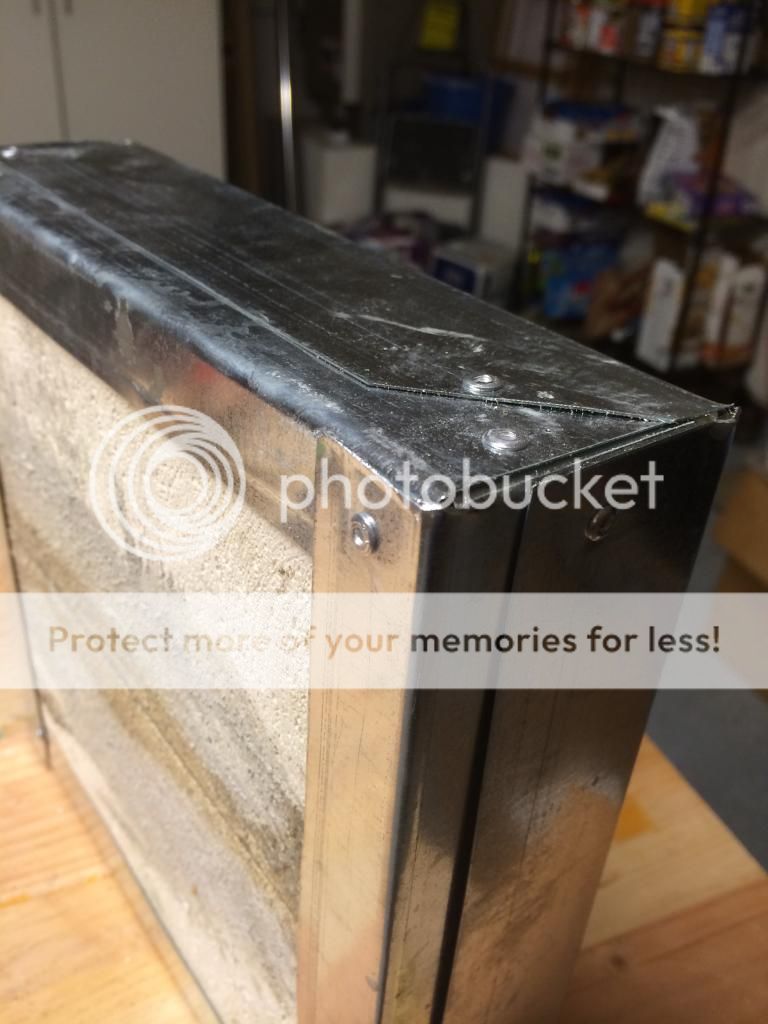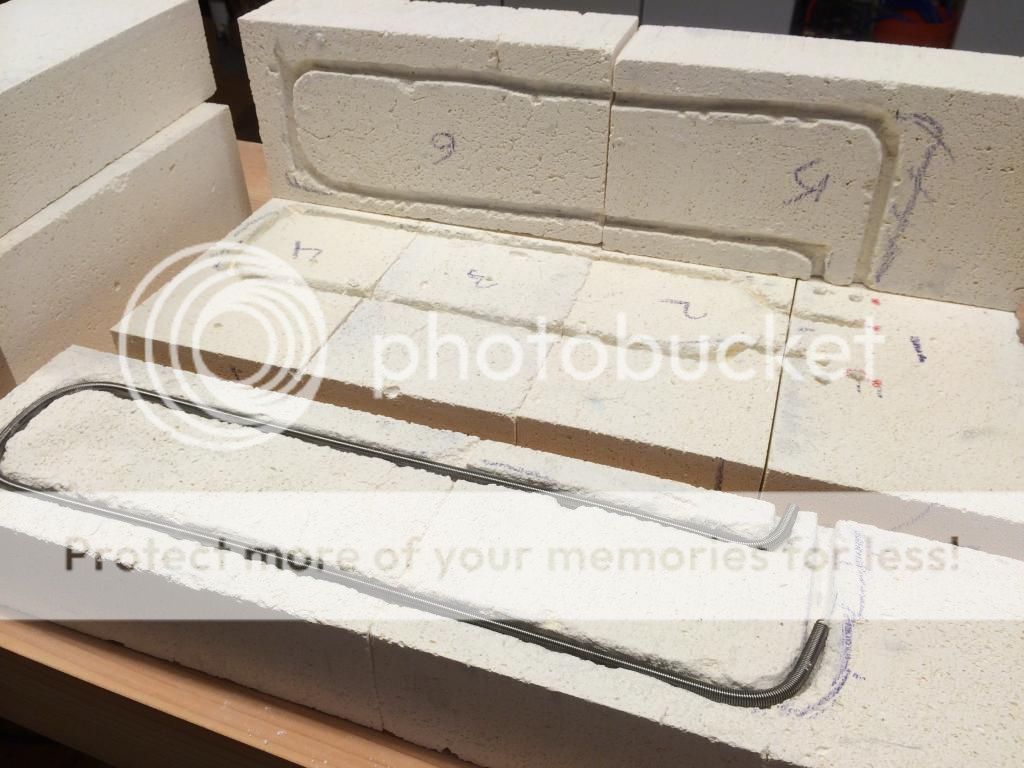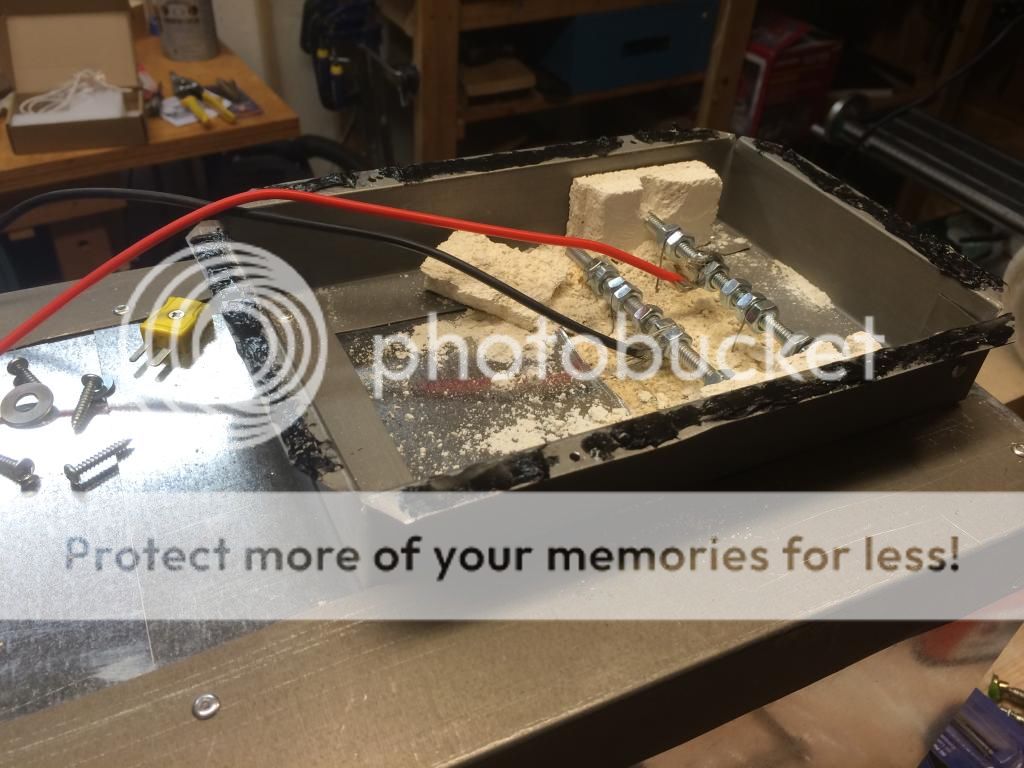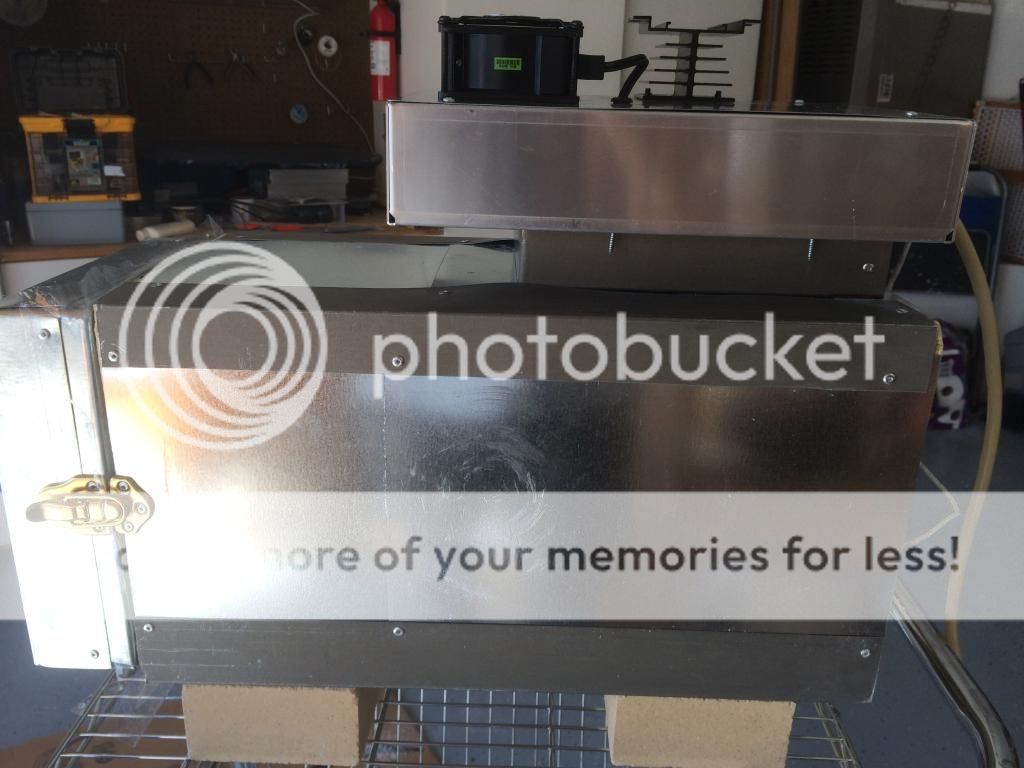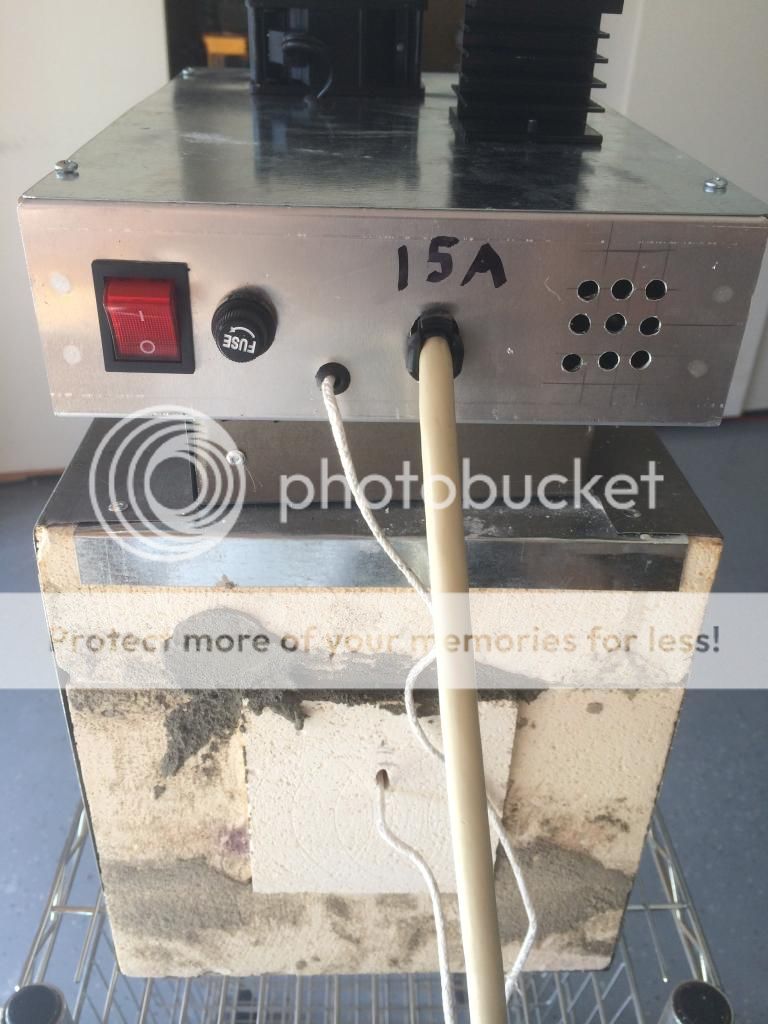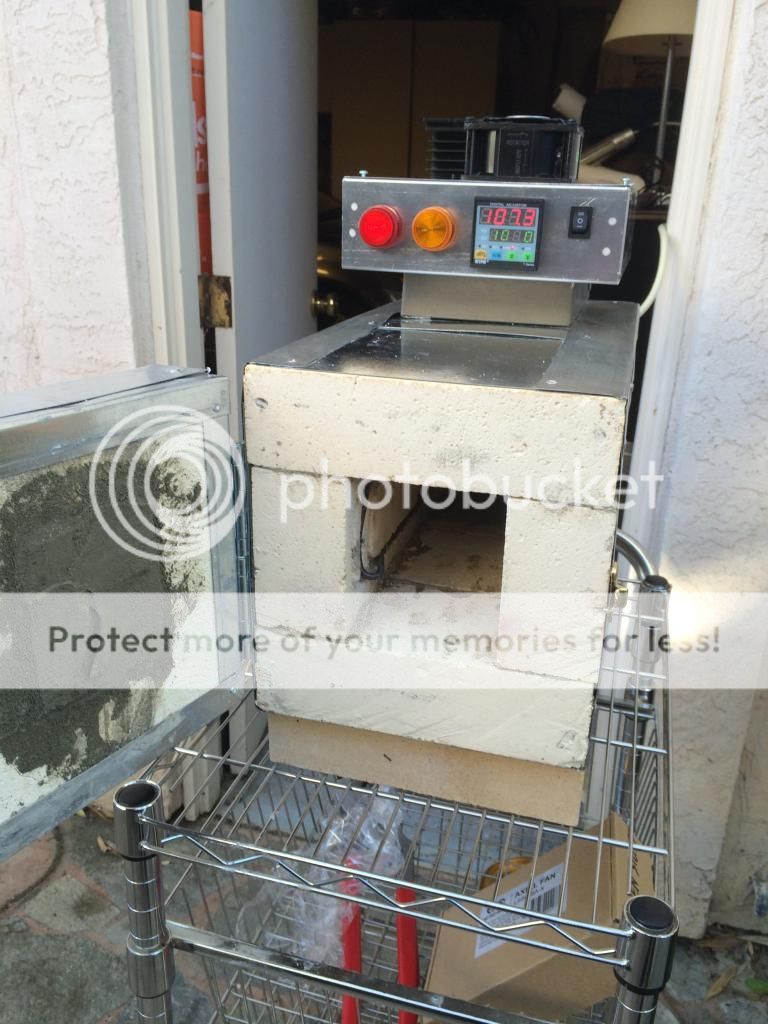Warning: several smart members have safety concerns about this oven. Do not blindly follow my design, it might get you killed!
I've got most of the parts to build something similar to D. Corneau's electric forge for the purposes of heat treating my blades. Er, well, my blade, since that's all I've made so far. I've got a few questions...
1. I don't have the means to encase the brick assembly in the metal case that Mr. Corneau built. My plan is to route all the wiring thru the ceiling and have it encased in an aluminum project box I have laying around which will house the PID controller, relay, switches, and indicators. I have no experience with firebrick, how hot will the outside of this thing get when the inside is 1800 F? If, for instance, I encased it in plywood, would it catch fire? I think a crack where heat escapes could make that a fire hazard. Better materials that don't involve welding?
2. The hinged door sure is nice:

But I see a lot of gas forges just have a hole or an open mouth instead of a door. Obviously they need oxygen to do their job. If I built a removable face out of firebrick with a, say, 6" hole in it, would that work? I'm not sure if all my heat will be escaping or what. I'm not planning on getting into air-quenched steels any time soon, but if I did my hazy understanding is you can heat them up and then turn the forge off and let them cool down slowly overnight. Would a hole hamper that?
3. The firebrick I have is the insulating (soft) type. Do I want any kind of non-insulating thermal mass inside the forge to give it some temperature stability? I've got some hard (non-insulating) firebricks lying around, I could just set a few of those inside.
4. What do I want to rest my blade on while it's being heated? Does it need to be aligned so it heats evenly from all sides or can I just toss it in there laying on the brick and not worry about it?
5. I have some portland cement, silica sand, and fire clay left over from an embarrassing attempt at casting the forge as a single piece. I think the right mix of that will make a mortar suitable for bonding the firebrick together (portland cement to hold it together until the fire clay cures at high temperature). Advice?
6. Mr. Corneau did something interesting with the thermocouple, he put it in a tube of some sort and ran it up in the middle of the chamber. Does placement matter much? Does it need to be protected?
I'm sure I'll have more questions but these should get me going. Thanks guys! And if you're wondering why I didn't just do a blowtorch + coffee can forge, well, so am I, but fire sort of scares me
I've got most of the parts to build something similar to D. Corneau's electric forge for the purposes of heat treating my blades. Er, well, my blade, since that's all I've made so far. I've got a few questions...
1. I don't have the means to encase the brick assembly in the metal case that Mr. Corneau built. My plan is to route all the wiring thru the ceiling and have it encased in an aluminum project box I have laying around which will house the PID controller, relay, switches, and indicators. I have no experience with firebrick, how hot will the outside of this thing get when the inside is 1800 F? If, for instance, I encased it in plywood, would it catch fire? I think a crack where heat escapes could make that a fire hazard. Better materials that don't involve welding?
2. The hinged door sure is nice:
But I see a lot of gas forges just have a hole or an open mouth instead of a door. Obviously they need oxygen to do their job. If I built a removable face out of firebrick with a, say, 6" hole in it, would that work? I'm not sure if all my heat will be escaping or what. I'm not planning on getting into air-quenched steels any time soon, but if I did my hazy understanding is you can heat them up and then turn the forge off and let them cool down slowly overnight. Would a hole hamper that?
3. The firebrick I have is the insulating (soft) type. Do I want any kind of non-insulating thermal mass inside the forge to give it some temperature stability? I've got some hard (non-insulating) firebricks lying around, I could just set a few of those inside.
4. What do I want to rest my blade on while it's being heated? Does it need to be aligned so it heats evenly from all sides or can I just toss it in there laying on the brick and not worry about it?
5. I have some portland cement, silica sand, and fire clay left over from an embarrassing attempt at casting the forge as a single piece. I think the right mix of that will make a mortar suitable for bonding the firebrick together (portland cement to hold it together until the fire clay cures at high temperature). Advice?
6. Mr. Corneau did something interesting with the thermocouple, he put it in a tube of some sort and ran it up in the middle of the chamber. Does placement matter much? Does it need to be protected?
I'm sure I'll have more questions but these should get me going. Thanks guys! And if you're wondering why I didn't just do a blowtorch + coffee can forge, well, so am I, but fire sort of scares me
Last edited:


